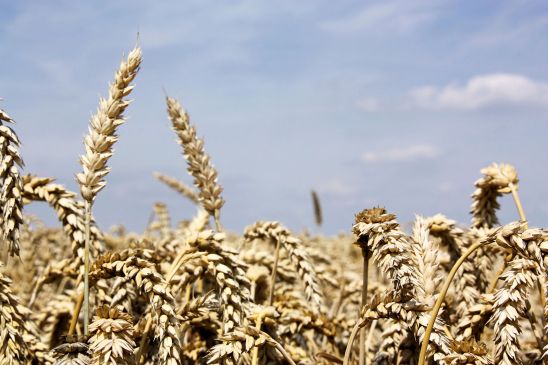Author Archives: Australian Centre for Ancient DNA
Natural Trap Cave (NTC) update installment
The Barefoot team visited the cavers, archaeologist, paleontologist and biologists at Natural Trap Cave to capture the international team at work. Fossils as old as 30,000 years were uncovered and taken back to research labs for investigation, including ACAD. We are working on analysing the array of samples discovered.
Natural Trap Cave – The Pleistocene Epoch from Barefoot on Vimeo.
GMOs: not just for dinner
Genetically modified organisms (GMOs) are a controversial topic. Broadly speaking, they can be defined as “any organism whose genetic material has been altered using genetic engineering techniques”. In this case, “genetic material” refers to an organism’s DNA, which is the heritable blueprint of life. DNA has four “letters”: A, C, G, and T. Different combinations of these create “words” (called genes) which can be read by our cell’s machinery to build proteins. Proteins are the workhorse molecules of life, performing a diverse set of important tasks in the body, such as producing energy and providing structure to your cells. Continue reading
Extracting DNA: separating the wheat from the chaff
Reading the sequence of DNA molecules (the order of As, Gs, Cs, and Ts) is how ACAD researchers reconstruct the history of life. However, life at a cellular level is an intricate dance of simple and complex molecules – proteins, fats, carbohydrates – all working in concert to keep cells alive. DNA is part of this dance, the sheet music from which the music is read, providing the master copy of instructions for complex molecules such as enzymes. To ensure each of these molecules is made only when they’re needed, the DNA is not free-floating, but bound, packaged, and carefully regulated. Unfortunately, sequencing machines can only deal with pure DNA; all those other molecules will cause critical errors. So first we must separate the DNA wheat from the chaff by doing a DNA extraction.

Figure 1: Wheat seed heads. Before the wheat grains can be used, the tough dry cases enclosing them – the husk or “chaff” – must be removed. Credit: Dako99.
Recovery and identification of missing servicemen
As we approach the commemoration of ANZAC Day, we are reminded of the more than 25,000 Australian servicemen missing in action who have yet to be recovered and identified. On the 17th June 1917, British and Australian forces launched an offensive against German lines at Messines in Belgium. Made famous by the film “Beneath Hill 60” , the Battle of Messines was one of the most successful campaigns by the Allies on the Western Front during World War 1. However, success came at a terrible price with more than 13,500 Australian casualties. Continue reading
Micro-magicians make the cheese
Microbes get a bad rap. Like many things in life, we focus on their negative aspects—ignoring the positives. While some microbes can make us sick, most of them do not, and many actually help us! One tasty example of humans and microbes working together is the production of cheese.

Fig. 1: A tiny subset of the varieties of cheese! Credit: dairy.org
LabARTory – the art of science architecture
I didn’t make a mistake; I intentionally used Bing. I learnt two interesting things from this: Firstly, it’s amazing how a different search engine introduces you to a very different range of information. Secondly, a lot more thought went into the artistic design of the ACAD ancient DNA lab than I had ever suspected. Continue reading
(Re)introducing the microbial buddy system
Co-extinction may be the most common form of extinction there is. From the Tasmanian tiger to the gastric-brooding frog, it’s no secret that lots of Australia’s animals have gone extinct. But many tiny microorganisms were dependent on these large animals. What happened to these microbes after the loss of their bigger buddies, and, if we can bring the animals back, will their microbes return too? Continue reading
PhD opportunity: “Paleoclimate analysis using ancient microbial DNA: The history of Antarctic melting”
A PhD project is available at the Australian Centre for Ancient DNA using ancient Antarctic microbial records to reconstruct the impacts of past climate change. Microbial DNA preserved in ice cores will be used to reconstruct the history of Antarctic ice sheet behaviour over the last full glacial cycle (from 130 kyr), with major implications for understanding past periods of rapid sea level change and for providing baseline measures for global climate change models. The project has strong potential to make major contributions to our understanding of past climate change, and for informing predictive models for the next century.
The project is a collaboration with Prof. Chris Turney, and Dr Chris Fogwill, of UNSW in Sydney, and there is the potential for Antarctic fieldwork during the project.
A highly motivated candidate with strong initiative and organisational skills is required, with a background in environmental microbiology and climate change. A publication record would be a distinct advantage, and the position is open to both Australian and international candidates.
Contact Prof. Alan Cooper, alan.cooper@adelaide.edu.au, with a letter of interest, background information addressing the above criteria, and a CV by 21st October 2015.
OAGR: a brand new genome database
By Jimmy Breen and Andrew Farrer
Here at ACAD, the incredible range of rare, ancient samples we get to work with always excites us. The DNA data we are able to recover from these samples, alongside their crucial contextual information, reveals amazing insights into our history. We also realise that sharing data allows all researchers to ask bigger, broader, more detailed questions, and gives us the ability to answer them in more depth. Continue reading

